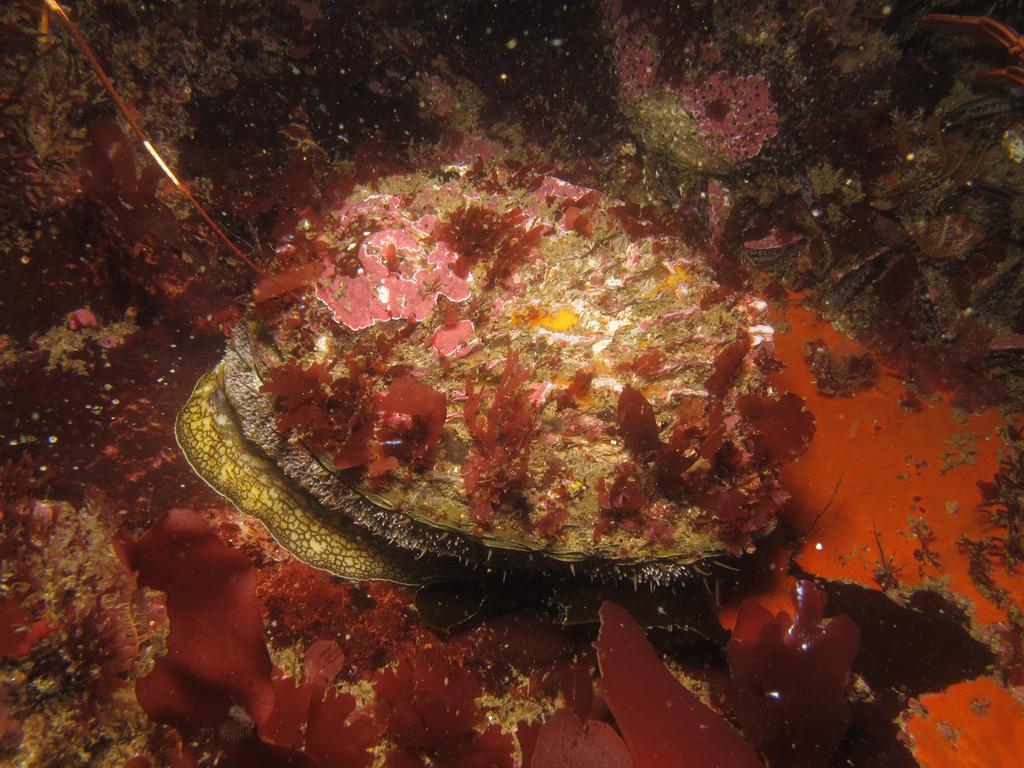Haliotis midae on:
[Wikipedia]
[Google]
[Amazon]
 ''Haliotis midae'', known commonly as the South African abalone or the perlemoen abalone, is a
''Haliotis midae'', known commonly as the South African abalone or the perlemoen abalone, is a
Linnaeus, C. (1758). Systema Naturae per regna tria naturae, secundum classes, ordines, genera, species, cum characteribus, differentiis, synonymis, locis. Editio decima, reformata. Laurentius Salvius: Holmiae. ii, 824 pp
 ''Haliotis midae'', known commonly as the South African abalone or the perlemoen abalone, is a
''Haliotis midae'', known commonly as the South African abalone or the perlemoen abalone, is a species
In biology, a species is the basic unit of classification and a taxonomic rank of an organism, as well as a unit of biodiversity. A species is often defined as the largest group of organisms in which any two individuals of the appropriate s ...
of large sea snail, a marine gastropod mollusk
Mollusca is the second-largest phylum of invertebrate animals after the Arthropoda, the members of which are known as molluscs or mollusks (). Around 85,000 extant species of molluscs are recognized. The number of fossil species is e ...
in the family
Family (from la, familia) is a group of people related either by consanguinity (by recognized birth) or affinity (by marriage or other relationship). The purpose of the family is to maintain the well-being of its members and of society. Idea ...
Haliotidae
''Haliotis'', common name abalone, is the only genus in the family Haliotidae.
This genus once contained six subgenera. These subgenera have become alternate representations of ''Haliotis''. The genus consists of small to very large, edible, ...
, the abalones.
Subspecies
* ''Haliotis midae volcanius'' Patamakanthin & Eng, 2007Description
The size of the shell varies between . "The large shell has a rounded-oval shape and is moderately convex. The distance of theapex
The apex is the highest point of something. The word may also refer to:
Arts and media Fictional entities
* Apex (comics), a teenaged super villainess in the Marvel Universe
* Ape-X, a super-intelligent ape in the Squadron Supreme universe
*Apex, ...
from the margin about equals one-fifth the greatest length of the shell. The body whorl is strongly angled at the position of the perforations, perpendicularly descending from the angle to the columellar margin. The surface shows strong, elevated, radiating wrinkles or lamellae, but no spiral markings when adult. The 6 to 11 perforations are small, subcircular, and separated by spaces greater than their own diameter. The two sides are about equally curved. The convexity varies with age. The color of the shell is yellowish-gray. The folds are usually stained with coral-red. The surface is dull, with fine oblique growth-wrinkles and coarse, prominent, less oblique elevated and wavy radiating lamellae. The low spire
A spire is a tall, slender, pointed structure on top of a roof of a building or tower, especially at the summit of church steeples. A spire may have a square, circular, or polygonal plan, with a roughly conical or pyramidal shape. Spires a ...
is composed of about 3 whorls. The body whorl is angulated at the row of perforations. The inner surface is pearly, many-colored, red predominating in young specimens. The muscle-scar is large, rounded, very rough, especially in old shells, which often have coppery stains inside. The columellar plate is rather broad (one-seventh to one-tenth the width of the shell), sloping inward. Its face is a little concave and not at all truncated at the base. The cavity of the spire is large, showing about 1½ whorls from below."
Distribution
''Haliotis midae'' isendemic
Endemism is the state of a species being found in a single defined geographic location, such as an island, state, nation, country or other defined zone; organisms that are indigenous to a place are not endemic to it if they are also found else ...
to the waters off South Africa
South Africa, officially the Republic of South Africa (RSA), is the Southern Africa, southernmost country in Africa. It is bounded to the south by of coastline that stretch along the Atlantic Ocean, South Atlantic and Indian Oceans; to the ...
.Oliver, A.P.H. (2004). ''Guide to Seashells of the World.'' Buffalo: Firefly Books. 22–23.
References
Linnaeus, C. (1758). Systema Naturae per regna tria naturae, secundum classes, ordines, genera, species, cum characteribus, differentiis, synonymis, locis. Editio decima, reformata. Laurentius Salvius: Holmiae. ii, 824 pp
External links
* Franchini P., van der Merwe M. & Roodt-Wilding R. (2011). "Transcriptome characterization of the South African abalone ''Haliotis midae'' using sequencing-by-synthesis". '' BMC Research Notes'' 4: 59. . * Roux A., Sandenbergh L. & Roodt-Wilding R. (2008). "Preliminary investigation to determine the cytotoxicity of various cryoprotectants on South African abalone ''Haliotis midae'' embryos". ''Cryobiology
Cryobiology is the branch of biology that studies the effects of low temperatures on living things within Earth's cryosphere or in science. The word cryobiology is derived from the Greek words κρῧος ryos "cold", βίος ios "life", and λό ...
'' 57: 3. .
*
{{DEFAULTSORT:Haliotis Midae
midae
Gastropods described in 1758
Taxa named by Carl Linnaeus